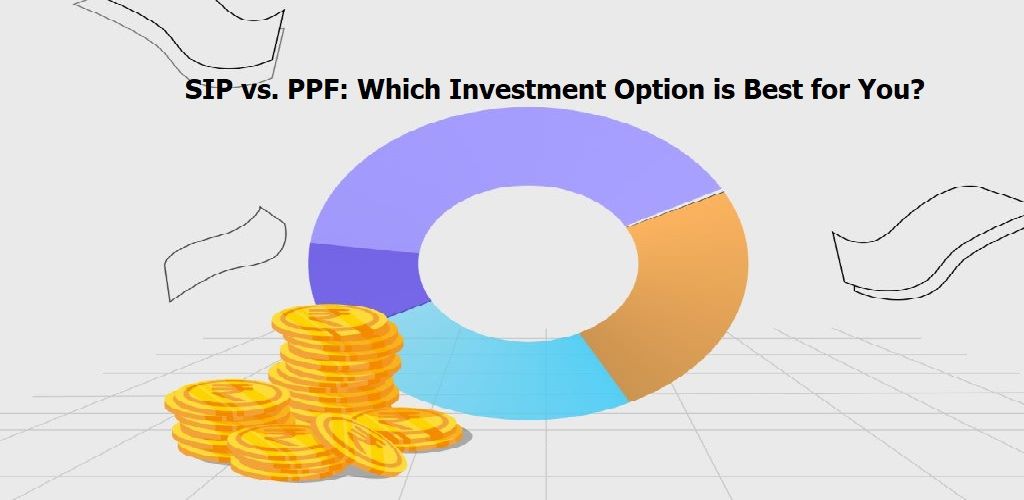The debate between the Old Pension Scheme (OPS) and the New Pension Scheme (NPS) is not new. Since the government put a stop to the OPS in 2004 and replaced it with the New Pension Scheme (NPS), it has become the “talk of the town”. The New Pension Scheme is now called the “National Pension Scheme”.
The decision to replace the traditional pension scheme with the NPS was aimed at creating a more sustainable and market-based pension system. However, the move has sparked a continuous debate over whether the NPS is beneficial as compared to its previous version, i.e., the Old Pension Scheme.
Initially, the NPS was introduced exclusively for government employees, but its scope was expanded in 2009 to cover individuals from all sectors, be it private or government.
Ready to know the differences? If so, this post will give a comprehensive understanding of the ongoing debate between OPS & NPS.
What’s the Old Pension Scheme?
The Old Pension Scheme (OPS) is a retirement plan designed for state and central government employees with a minimum of 10 years of service. The pension amount offered under the scheme is determined by considering either the last salary received or the average of the last salary and dearness allowance (DA), depending on which option is beneficial for the pensioner.
One of the key highlights of OPS is that employees are not required to contribute to the pension fund. Instead, the entire financial burden is borne by the government which includes all the costs associated with the pension amount. Although employees do not enjoy any income tax benefits during the service, the pension they receive after retirement is exempt from taxation.
Upon retirement, government employees who are enrolled in OPS receive a regular pension payment along with the benefit of dearness allowance (DA) revisions. The DA is adjusted twice a year so that there is an increase in pensions for retirees.
Understanding New Pension Scheme
In 2004, the National Democratic Allowance (NDA) government decided to discontinue the Old Pension Scheme (OPS) and introduced the National Pension Scheme (NPS) for government employees. This change aimed to provide a complete pension system. Subsequently, in 2009, the government expanded the scope of NPS to include all citizens, including self-employed individuals and those working in the unorganised sector.
The NPS is a pension scheme that allows individuals to contribute a certain amount every month until they reach the age of 60, after which they become eligible to receive a pension upon retirement. This scheme provides an opportunity for individuals to actively save for their golden years of retirement.
One of the biggest benefits of NPS is the tax benefits it offers. No matter what the contributions made towards the NPS, they are eligible for deductions under Section 80C of the Income-tax Act. It will help the customers to reduce their taxable income by up to Rs. 1.5 lakh in a financial year. Furthermore, an additional deduction of up to Rs. 50,000 is allowed under Section 80CCD (1b) specifically for contribution to the NPS.
Exploring Features and Advantages of OPS
Listed below are the salient features and benefits of OPS. Let’s discuss them in detail!
- No Salary Deduction for Pension
One of the key features and benefits of OPS is that employees’s salaries remain unaffected as there are no deductions made in the pension scheme. It allows employees to receive their full salaries during their service period.
- Government-Funded Scheme
It is no secret that is a government-funded scheme which means that the government bears all the expenses associated with providing pensions to eligible employees. It ensures financial stability and security for retirees.
- Higher Pension Amount
Another main feature of OPS is that the pension amount is pre-determined using a specific formula. Employees are entitled to receive either;
- 50% of the last drawn basic salary plus Dearness Allowance (DA), or
- The average earnings during the last ten months of service, whichever amount is higher.
Note: It will help in determining a fair and reasonable pension amount for retirees.
- Tax Exemption on Pension
One of the major features and benefits of OPS is that the pension amount received by retirees is tax-exempt. It means that pensioners don’t have to pay income tax on the pension they receive.
- Guaranteed & Indexed Pension Payments
Last but not least, the OPS ensures that retired government employees and their spouses receive guaranteed pension payments. These payments are not subject to market fluctuations or economic uncertainties which means that the individuals will get a stable source of income during retirement.
What are the Features and Advantages of the New Pension Scheme?
Here is the list of the features and benefits of the New Pension Scheme.
- Tax-Free Withdrawl
One of the major features and benefits of considering the New Pension Scheme is that employees enrolled in NPS can withdraw 60% of their accumulated corpus and the withdrawal is tax-free. This feature provides retirees with a significant amount of financial flexibility and freedom.
- Investment Flexibility & Control
Another major benefit of NPS is that it offers employees the ability to exercise more control and flexibility over their investments. They can choose the professional fund manager who has demonstrated the highest returns which enables them to optimise their investment strategy based on the risk appetite and financial goals.
- Professional Fund Management for Higher Returns
Since NPS funds are managed by certified fund managers, you can rest assured that your investment amount will be handled by experts which will ultimately lead to higher returns. Employees can benefit from the expertise of these fund managers in generating optimal investment returns.
- Regulatory Oversight for Safety
One of the major features of NPS is that the Pension Fund Regulatory and Development Authority (PFRDA) regulates the NPS with transparent investment norms. Regular performance reviews and monitoring of fund managers by the NSP trust ensures the safety and reliability of the scheme. This regulatory oversight provides employees with confidence in their investment choices.
- Online Account Management
Last but not least, NPS accounts can be easily operated and managed online which means that it offers convenience and flexibility to employees. With such convenience, people can easily access their account information online, track their investments, and make necessary changes or adjustments as needed.
Key Differences Between OPS and NPS
Let’s take a look at the key differences between OPS & NPS based on the following parameters.
| Parameters | OPS | NPS |
| Eligibility | Under the OPS scheme, only government employees are eligible. | On the other hand, government and non-government employees and individual citizens between 18-60 years. |
| Flexibility | With OPS, there is limited flexibility in terms of investment choices and pension benefits. | NPS, on the flip side, provides flexibility in choosing contribution levels, investment options, and pension withdrawal strategies. |
| Pension Amount | Talking about OPS, 50% of the last drawn salary Plus DA or the average earnings in the last 10 months of service, whichever is more, is given as a pension. | Speaking of NPS, there’s a 60% lump sum after retirement and 40% invested in annuities for getting a pension. |
| Contribution Amount | Under OPS, employees don’t contribute any amount. | On the other hand, government employees contribute 10% of their salary (basic + dearness allowance), and the government contributes 14%. |
| Portability | Under the OPS scheme, portable options are limited, particularly for government employees moving between departments or states. | NPS, on the other hand, provides portability across employers and locations, with the option to switch between various pension fund managers. |
| Income Tax Benefits | There are no tax benefits available under the plan. | With NPS, Employees can claim tax deductions of up to 1.5 lakh under Section 80C of income tax. |
| Risk Exposure | With OPS, there is minimal risk exposure for employees, as pension benefits are guaranteed by the government. | On the flip side, employees bear the entire investment risk. |
| Post-retirement healthcare Benefits | May or may not include healthcare benefits depending on the specific plan. | Under NPS, there are no specific healthcare benefits are provided. |
The Bottom Lines
So, there you have it! The choice between the OPS & NPS depends on individual preferences, risk tolerance, and financial goals. It is crucial for employees and citizens to carefully evaluate the features, benefits, and trade-offs of each scheme to make an informed decision that aligns with their specific needs and circumstances.
The OPS, with its key features of no salary deductions, government funding, a pre-determined pension calculation formula, tax exemption on pension, and guaranteed inflation-indexed pension payments, offers a secure and stable pension system for retired government employees. On the other hand, the NPS introduces a more flexible and market-driven approach to pension provision. With features such as tax-free withdrawal options, investment flexibility, and control, professional fund management for potentially higher returns, and online account management, the NPS offers an opportunity to actively manage and optimize their retirement savings.







